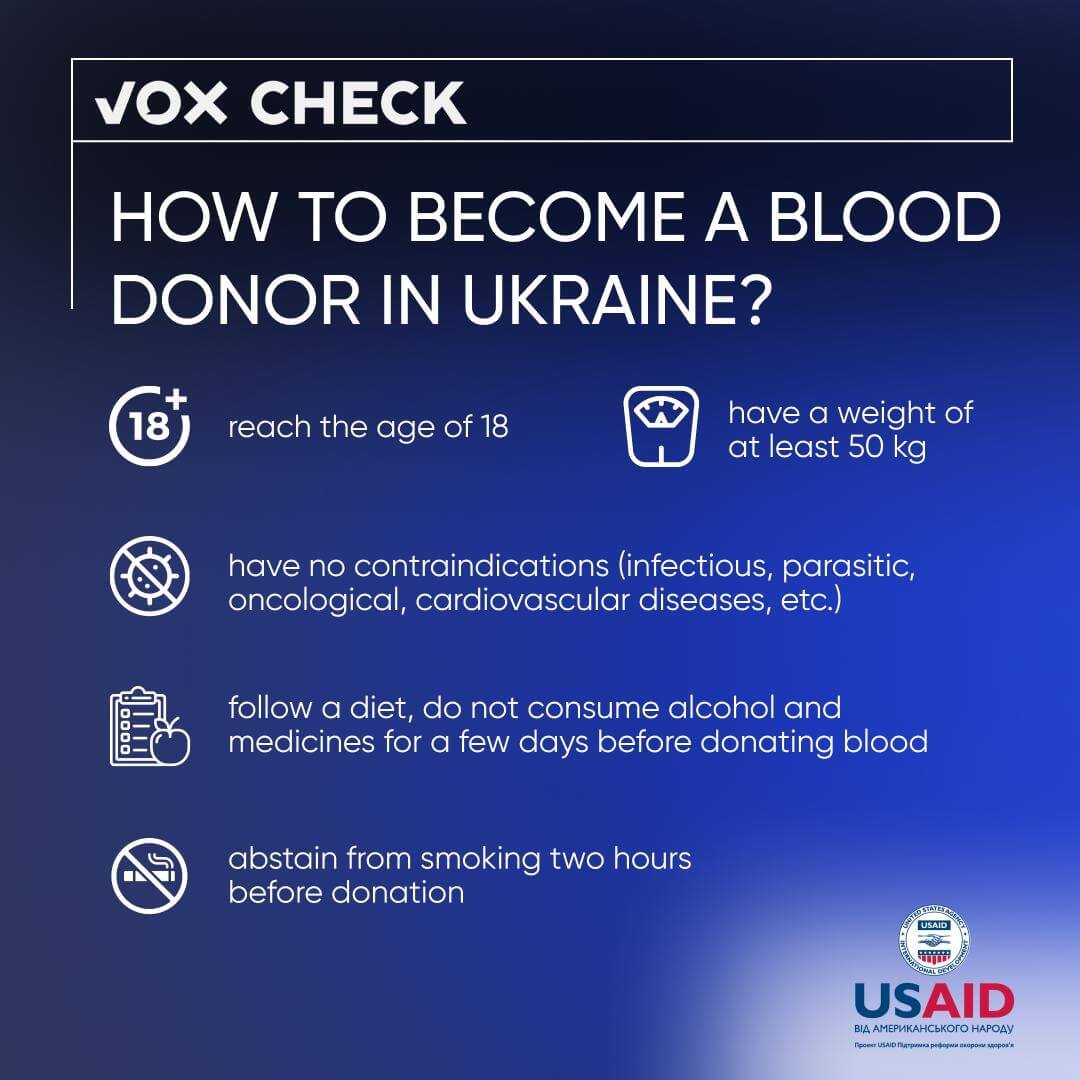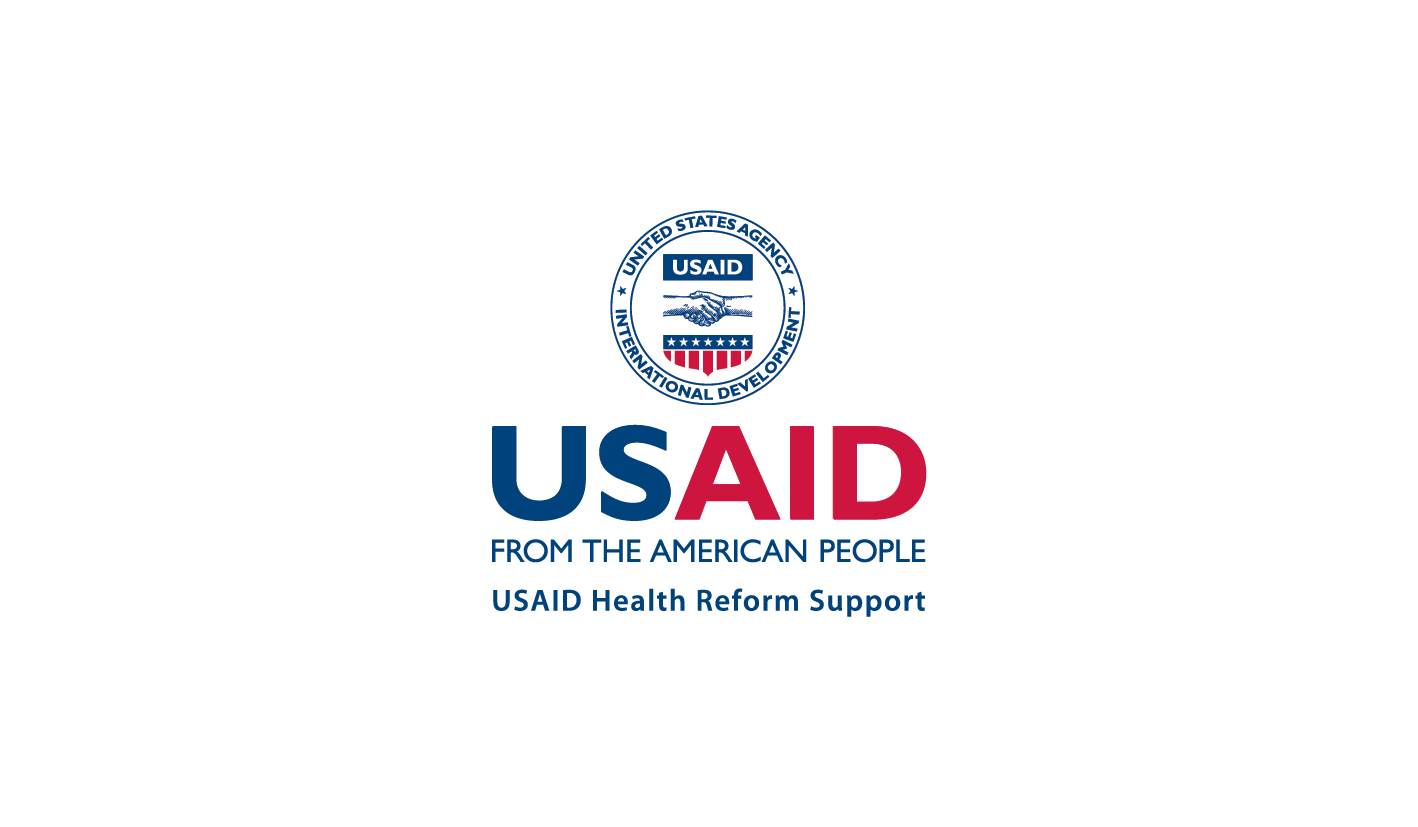Mass waves of appeals to donate blood for wounded military or civilians have periodically surfaced on social media throughout Russia’s full-scale invasion of Ukraine. Most often, this happens after reports in the media about massive rocket attacks or a difficult situation at the front. One of the attributes of such a message is a comment like: “Spread this information, repost, everyone should know about it!!!“. Such appeals turn on emotions in users of social networks — and turn off their critical thinking. This creates panic and excessive agiotage in regional blood centers, which leads to queues, overloading of medical staff, and rejection of potential donors.
However, such messages often turn out to be fake. We explain what is wrong with them and why you should not rush to donate blood immediately after such posts.
With the support of the USAID Health Reform Support project, VoxCheck analyzes and refutes public health narratives spread in the information space of Ukraine, Belarus, and russia on a weekly basis.
In this article, VoxCheck together with DonorUA refutes hostile messages that can destabilize the blood donation system in Ukraine.
Let’s analyze several examples of messages about the urgent need to donate blood. Sometimes the names of real blood centers are used in the messages. For example, recently, information was spread on the network that the third negative blood is urgently needed at the O.O. Shalimov Institute of Surgery and Transplantology.
Screenshot of a tweet
Screenshot of a post on Facebook
First, let’s analyze the case with the mention of the Shalimov Institute. The medical facility itself reacted to the spread of calls to donate blood and published a refutation on its Facebook page. The Institute’s administration explained that the information regarding the institution’s immediate need for donor blood is not entirely true. Thus, the Department of Transfusiology functions at the Institute, and a systematic collection of donor blood is carried out. In case there is an urgent need for donor blood or something else (medicines, clothes, etc.), such information is published on the Institute’s official website and social media pages. Therefore, they ask to be more careful with messages in various network groups, as they may be fake or distorted information.
Ukraine’s Ministry of Health (MoH) has repeatedly commented on the spread of reports about blood for wounded soldiers. In particular, at the request of “UP.Zhyttia”, the Ministry of Health confirmed that the situation is under control and there is no critical blood shortage. The blood system in Ukraine operates in the mode of “maintenance of stocks“: accumulated stocks of blood components are replenished in time according to the quantities transferred to health care institutions.
Previously, the press center of the Ministry of Health also explained that Ukraine had established a systematic planned donation, which makes it possible to ensure stable supplies of blood and its components. The specialized state institution “Ukrainian Center for Transplant Coordination” takes care of coordinating the delivery of supplies between regions. If there is a need for a rare blood group, and there is no time for delivery from another region, then donors who are in the online database are contacted.
It is better and more efficient for the blood donation system to have donors come to blood centers all the time, and not only in the case of a major emergency or in response to individual messages in the media or social networks.
The adverse effect of “emotional” donation was described in detail by the director of the Vinnytsia Regional Blood Transfusion Center, Oksana Banakh, during the presentation of the database of medical fakes “Detox from Propaganda” by VoxCheck. According to her, the spread of fake messages leads to the formation of long queues of people willing to donate blood near blood centers. However, the medical institution will not be able to physically collect all the blood that it will receive from donors in conditions of agitation, as it has limited both technological and human resources.
“We just can’t process all the blood because the equipment has to rest, and our staff gets tired,” she says. As DonorUA explained to VoxCheck, the storage life of blood is short, and its collection and disposal are quite expensive. Also, in addition to everything else, the mass collection of blood, which cannot be used by any means, leads to a waste of resources during the war. Employees try to establish communication with potential donors, explain the need to wait, and make an appointment for another day. However, some people, realizing that there is no urgent need, will no longer return to the center.
The organization also notes that Ukrainians’ habit of spontaneous and family donation (situations when blood is donated only for loved ones if their lives are in danger) negatively affects the quality of blood. Accidental unplanned donations are a risk of transmission of infections to the recipient.
It is important to emphasize that although we call such reports fake, this does not negate the need for donors in general, but only the hyped demand at a specific moment. There is always a need for blood, especially in times of war. However, blood is a limited resource and cannot be stored for long. Collection of donor blood should be carried out constantly in a standardized manner — then, the initiative of citizens will be of maximum benefit.
How to become a donor of blood and its components?
- Check whether you meet the requirements of a blood donor. Blood donors in Ukraine can be healthy people over the age of 18 and weighing over 50 kg, without temporary (for example, recently ill, taking medication, getting a tattoo or vaccination) or absolute (cardiovascular diseases, diabetes, etc.) contraindications.
- Choose a blood center or a specific recipient and schedule a donation for a day and time convenient for you. Have identity documents with you: national ID and identification code.
- Follow a healthy lifestyle and diet before donation.
- Whole blood donation consists of two stages: a medical examination and the donation itself, which takes no more than 10 minutes. During the medical examination, the donor’s blood group and hemoglobin level are determined, blood pressure and pulse are measured, the completed questionnaire is checked, and the state of health and lifestyle are clarified. Donation takes place in a specially equipped room for blood sampling — a manipulation room. The dose of blood sampling is 450 ml, and another 20 ml is taken for analysis of diseases that can be transmitted through blood (HIV/AIDS, syphilis, hepatitis B and C, and liver indicators). Further, the erythrocyte mass is obtained by centrifugation, the shelf life of which is from 21 to 42 days. If repeated tests do not reveal contraindications, the blood, after processing, will be issued for transfusion to the recipient.
- Platelet donation also takes place in two stages: taking tests and collecting platelets. The interval between stages can be several hours or several days. To collect blood, the donor is connected to a separator. All filters and equipment are prepared for single use. The device takes blood from the vein and filters it, leaving only platelets and a small amount of blood plasma, which is necessary to maintain platelets in a viable state. Other blood components are immediately returned to the person. Platelet mass is taken in a volume of approximately 200 ml. For an adequate procedure, the donor is injected with a small volume of anticoagulant solution to prevent blood clotting in the needle of the collection system.
- Plasma donation is conducted similarly to platelet donation but takes less time: about two hours, including the procedure and standard blood tests. Plasma is stored for three years.
- Granulocyte donation is the most time-consuming and complex. 8-12 hours before the donation, you should receive an injection of a drug that stimulates the active production of leukocytes. Donation lasts from one to two hours and is carried out by the apheresis method. Collected granulocytes are transfused within 24 hours. In Ukraine, there is only one blood center where granulocytes are collected — National specialized children’s hospital “Ohmatdyt”.
Source: Ministry of Health of Ukraine
This information piece was produced with the assistance of the United States Agency for International Development (USAID), provided on behalf of the people of the United States of America. This article’s content, which does not necessarily reflect the views of USAID, the United States Government, is the sole responsibility of Deloitte Consulting under contract #72012118C00001.
Attention
The authors do not work for, consult to, own shares in or receive funding from any company or organization that would benefit from this article, and have no relevant affiliations





